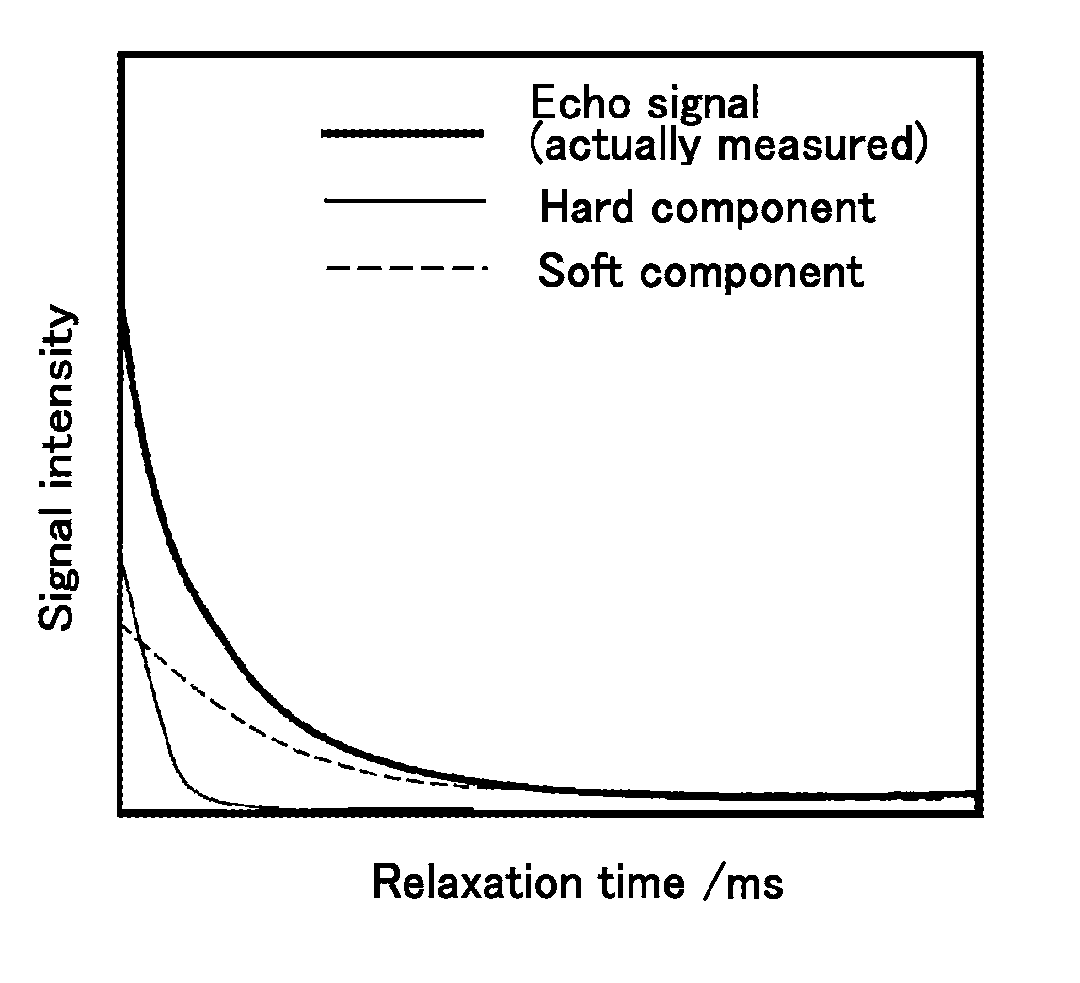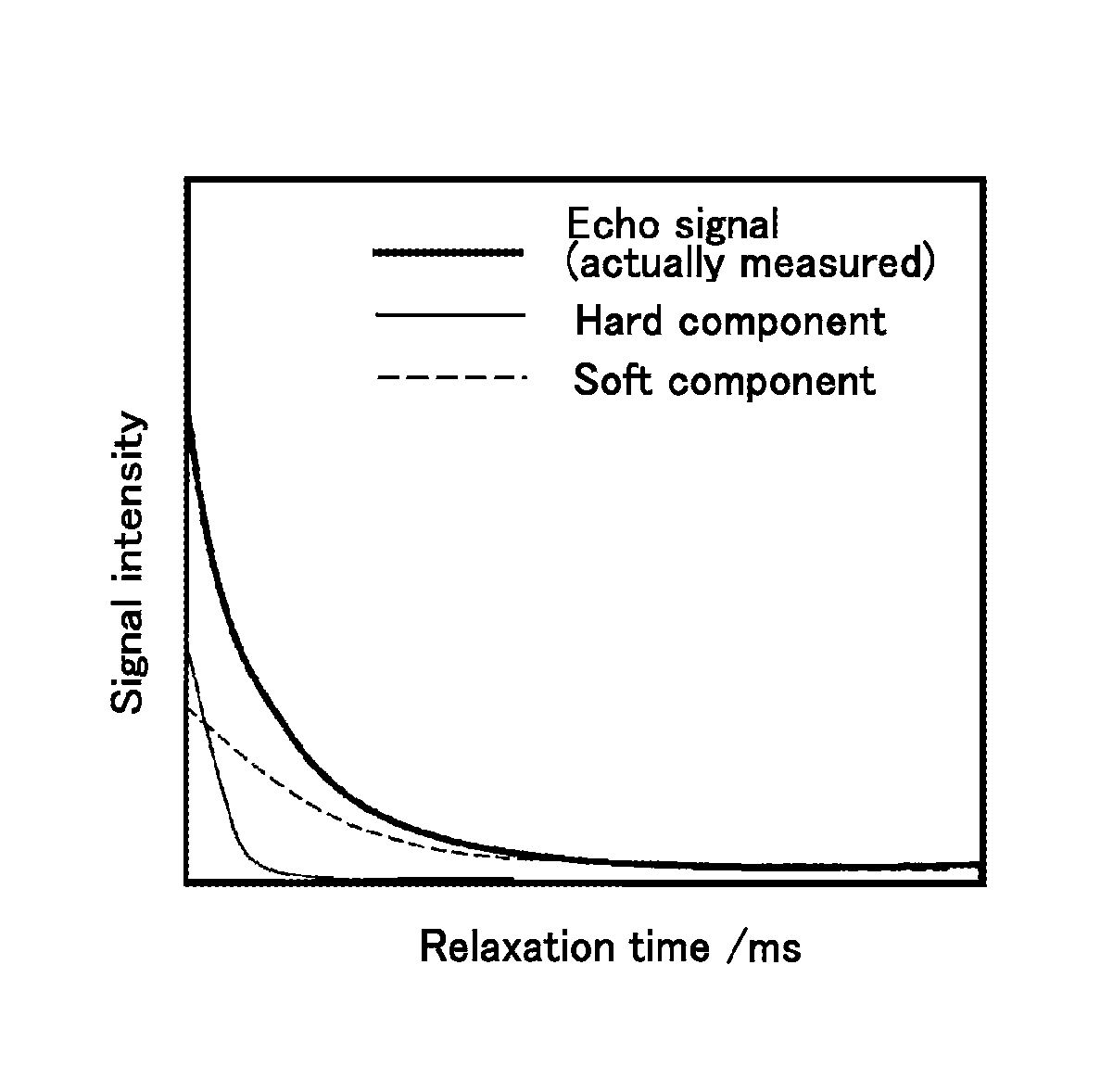Toner and two-component developer
a technology of toner and developer, applied in the field of toner and two-component developers, can solve the problems of poor heat resistance storage stability of toner having a low melting point, and achieve the effect of excellent low temperature fixability and excellent heat resistance storage stability
- Summary
- Abstract
- Description
- Claims
- Application Information
AI Technical Summary
Benefits of technology
Problems solved by technology
Method used
Image
Examples
example 1
˜Synthesis of Fine Resin Particle Emulsion˜
[0173]A reaction vessel equipped with a stirring bar and a thermometer was charged with water (683 parts), sodium salt of methacrylic acid-ethylene oxide adduct sulfate (ELEMINOL RS-30 manufactured by Sanyo Chemical Industries, Ltd.) (11 parts), polylactic acid (10 parts), styrene (60 parts), methacrylic acid (100 parts), butyl acrylate (70 parts), and ammonium persulfate (1 part), and they were stirred at 4,000 rpm for 45 minutes, which resulted in a white emulsion. The system was heated until the internal temperature became 75° C., and the white emulsion was reacted for 1 hour. A 1% ammonium persulfate aqueous solution (30 parts) was further added thereto, and the resultant was aged at 75° C. for 1 hour, to thereby obtain an aqueous dispersion liquid of vinyl-based resin (copolymer of styrene / methacrylic acid / butyl acrylate / sodium salt of methacrylic acid-ethylene oxide adduct sulfate) [Fine Particle Dispersion Liquid 1].
˜Preparation of A...
example 2
[0187][Toner 2] was obtained in the same manner as Example 1, except that the following [Fine Particle Dispersion Liquid 2] was used as the fine particle dispersion liquid. The thickness of the shell was 30 nm.
˜Synthesis of Fine Resin Particle Emulsion˜
[0188]A reaction vessel equipped with a stirring bar and a thermometer was charged with water (683 parts), sodium salt of methacrylic acid-ethylene oxide adduct sulfate (ELEMINOL RS-30 manufactured by Sanyo Chemical Industries, Ltd.) (11 parts), polylactic acid (10 parts), styrene (60 parts), methacrylic acid (100 parts), butyl acrylate (70 parts), and ammonium persulfate (1 part). The materials were stirred at 4,000 rpm for 15 minutes, and after this, stirred at 400 rpm for 30 minutes, to thereby obtain a white emulsion. The system was heated until the internal temperature was raised to 75° C., and the white emulsion was reacted for 4 hours. A 1% ammonium persulfate aqueous solution (30 parts) was further added thereto, and the resul...
example 3
[0189][Toner 3] was obtained in the same manner as Example 1, except that the following [Material Dissolved Liquid 3] was used as the material dissolved liquid. The thickness of the shell was 9 nm.
˜Preparation of Oil Phase˜
[0190]A vessel equipped with a stirring bar and a thermometer was charged with paraffin wax (melting point: 90° C.) (120 parts), [Crystalline Polyester Resin 1] (190 parts), and ethyl acetate (1,894 parts). While being stirred, the materials were warmed to 80° C., retained at 80° C. for 5 hours, and then cooled to 30° C. in 1 hour. Next, the vessel was charged with a cyan pigment (C.I. Pigment blue 15:3) (250 parts) and ethyl acetate (1,000 parts), and the resultant was mixed for 1 hour, to thereby obtain [Material Dissolved Liquid 3].
[0191]A pigment / wax dispersion liquid, an emulsified slurry, a dispersed slurry, a filtration cake, and toner base particles obtained with the use of [Material Dissolved Liquid 3] were referred to as [Pigment / Wax Dispersion Liquid 3]...
PUM
| Property | Measurement | Unit |
|---|---|---|
| spin-spin relaxation time | aaaaa | aaaaa |
| spin-spin relaxation time | aaaaa | aaaaa |
| temperature | aaaaa | aaaaa |
Abstract
Description
Claims
Application Information
 Login to View More
Login to View More - R&D Engineer
- R&D Manager
- IP Professional
- Industry Leading Data Capabilities
- Powerful AI technology
- Patent DNA Extraction
Browse by: Latest US Patents, China's latest patents, Technical Efficacy Thesaurus, Application Domain, Technology Topic, Popular Technical Reports.
© 2024 PatSnap. All rights reserved.Legal|Privacy policy|Modern Slavery Act Transparency Statement|Sitemap|About US| Contact US: help@patsnap.com









